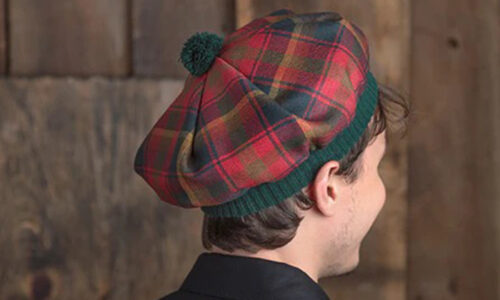The following is a brief introduction to the topic:
Kilts are a symbol of Scottish culture and heritage. They have a long history. Kilts are renowned for their unique designs and historic significance. They have fascinated people all around the globe. This article will examine the intricate details of the way a Scotsman wears the kilt. We will explore the details of this iconic clothing, from the basics to how it is worn.

What is the proper way to wear a kilt?
When worn by Scotsmen, the kilt is an elegant display of tradition and elegance. The kilt is worn around the waist, and the hem extends to the knees. This leaves the top of the legs exposed. The front of the kilt serves as the main focus, and the pleats in the back give the garment more volume. Further distinguishing the kilt is its unique tartan design, which is specific to every clan or family.
How to Wear a Kilt
For a proper kilt to be worn, a set of specific steps must be followed. Here are the steps to follow:
- The Kilt should be prepared by laying it flat, with the apron facing upwards.
- Wrap around the Waist – Stand facing the apron in front of your kilt. Wrap the kilt around your waist. Position the upper edge below the ribs. It should fit snugly but comfortably.
- The leather belts are used to secure the kilt. Straps are passed through slots in the left-side of the kilt, and then fastened at the front.
- Make any necessary adjustments to ensure the desired length. Adjust the length as necessary to achieve your desired look.
- Fold the pleats. The pleats on the back are an important feature. Fold the pleats evenly and carefully to achieve the desired look. The number of folds can vary according to personal taste and tartan patterns.
- A kiltpin can be used to attach the outer apron and the inner apron. The decorative pin keeps your kilt firmly in place and adds an air of elegance.
- Finish the look: Put on the sporran (a pouch that is traditionally worn in Scotland at the front of a Kilt) and attach it to your belt. To complete your traditional Scottish outfit, wear the jacket, socks and shoes that are appropriate.
Following these simple steps will allow you to wear your kilt the Scottish way, and pay homage the the rich Scottish heritage.
Questions about wearing the Kilt
Who can wear a Kilt?
Anyone can wear a Kilt. Its inclusivity is the beauty of a kilt. The kilt is a universal symbol that can be worn by anyone, regardless of their Scottish ancestry or heritage.
There are different kinds of kilts?
There are many different types of kilts. Each has its own characteristics. The traditional Scottish Kilt is a popular variation, as are the Casual Kilt and Formal Kilt. The kilts vary in fabric, style, and occasion.
What significance do the patterns of tartan have?
In Scottish culture, the tartan pattern has a significant significance. The tartan pattern represents the clan, region or family of a particular design. It is a symbol for heritage and identity. A tartan worn can be a sign of ancestral connection or membership with a certain group.
Are kilts suitable for special occasions only?
Absolutely! Kilts can be worn on special occasions. Kilts are worn at weddings and Highland gatherings. They add elegance and tradition. These kilts are popular for events like Highland Games and Scottish Festivals.
Is there a specific way to wear a kilt or a particular etiquette?
There are a few rules to wearing a Kilt, even though there is no rule book. Wearing the kilt is a sign of respect and pride for Scottish tradition. To maintain the appearance of the kilt, it is important to avoid crossing the legs when sitting.
The conclusion of the article is:
Kilts are a symbol that is deeply rooted in Scottish culture and tradition. Understanding how a Scotsman wears the kilt allows us to appreciate its cultural importance. Every detail of the kilt is meticulously perfected. From the exact alignment of pleats, to selecting the tartan design. Kilts are a strong symbol of pride and identity, whether worn to celebrate special occasions or represent one’s Scottish heritage.




